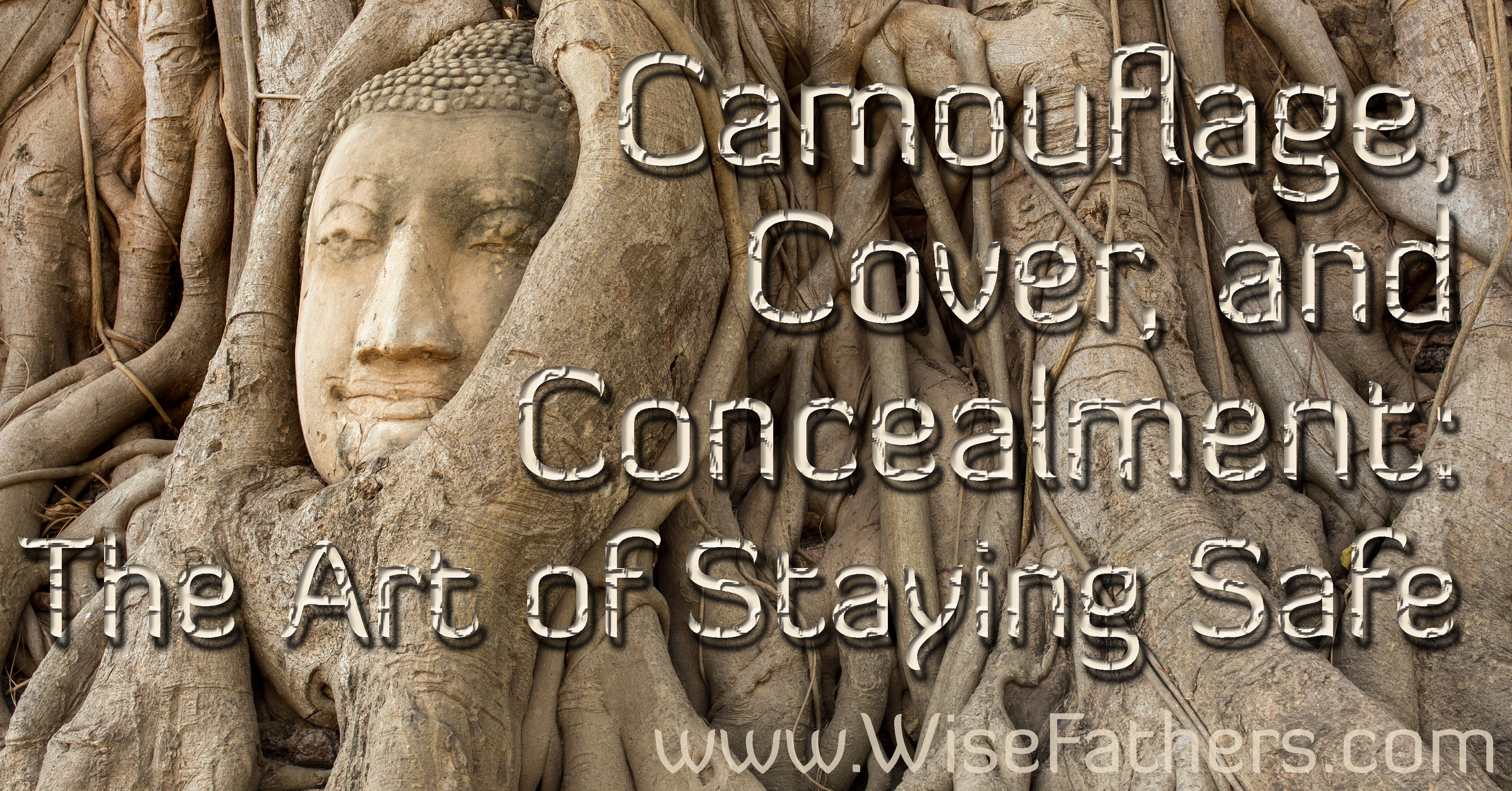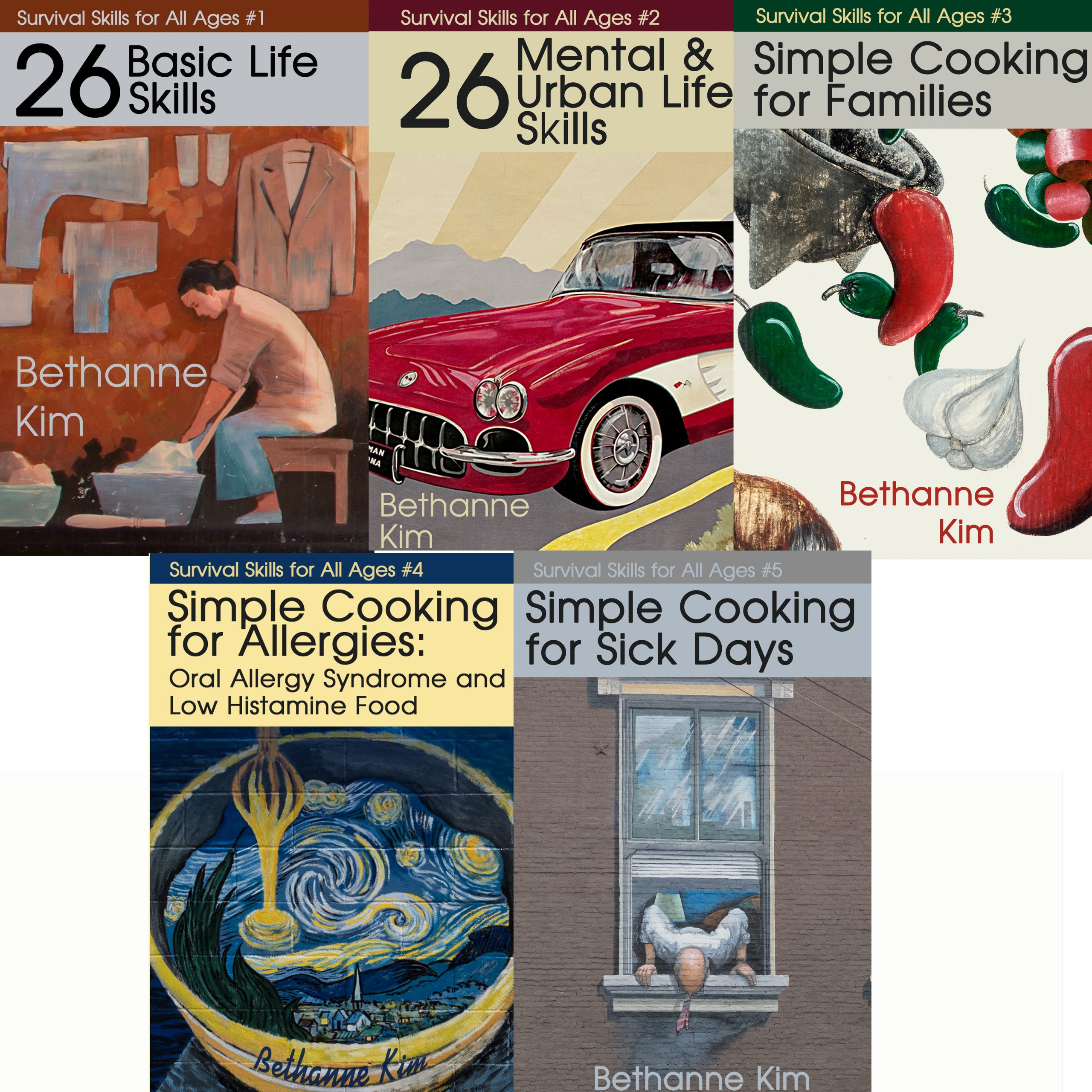
Camouflage, Cover, and Concealment: The Art of Staying Safe
This is from a book I am writing “26 Mental & Urban Life Skills” in my series “Survival Skills for All Ages.” Given the events in Las Vegas last night, I decided to share this information on camouflage, cover, and concealment. I pray that you and yours never need it.
Escape and evasion is always easiest if they can’t find you to begin with, and you certainly don’t want them to see you escaping and evading. So how to achieve this? Cover and concealment are the arts of hiding and not being noticed. Concealment keeps you from being seen. Cover keeps you safe(r).
Camouflage is the art of blending in so that no one notices you. In some situations, being invisible (or at least not noticeable) is the safest possible choice. Other times, we need to be entirely hidden to stay safe, which is where cover and concealment come into play.
It is important to remember that sometimes it’s important to be visible, even highly visible. That’s why hunters wear bright orange, traffic cops have brightly colored vests, and reflective tape is sold in fabric stores. These techniques aren’t necessary for everyday life. They are primarily for emergencies.
There are no guarantees in an emergency, but these suggestions should help you and yours stay safer if things go really, truly, catastrophically wrong.
Camouflage
You may still be seen–you may be in plain sight–but if you aren’t noticed, it doesn’t matter. The most famous kind of camouflage is, of course, the kind worn by the military and hunters that is designed to blend in with the woods. Another kind of camouflage popular in movies and pop culture takes the face paint used by the military to an unbelievable level. Even when people look directly at them, in plain sight, they may be effectively invisible because of how well they blend in.
Sometimes, people are overlooked because of ingrained habits and biases. Service workers (janitors, cooks, security) are often overlooked, even by people who are looking straight at them. That’s why it’s such a movie stereotype to have spies pretend to be in those jobs.
Ironically, camouflage that perfectly conceals you in one environment can make you stand out like zebra in the middle of a herd of sheep in another. When your surroundings change, your camouflage must change as well. Wearing an expensive suit on Wall Street will help you blend in as surely as a woman in a swimsuit blends in at the beach, but can you even imagine reversing the outfits? Talk about standing out!
Outside
The green and brown woodland camouflage favored by the military and hunters is what most people mean when they talk about “camouflage.” Camouflage (or “camo”) fabric patterns actually come in a wide variety of colors and styles to accommodate a wide variety of environments. Blues (water), tans (desert), grays (urban), and gray and white (snow / Arctic) are the most common. There are also specialized camouflage items for hunting, such as ghillie suits, and digitized patterns. Of course, each color comes in a variety of patterns since each manufacturer has slightly different patterns and different areas have different flora and fauna.
Of course, not all “outside” is in the woods or nature. If you are in a city, “camouflage” usually means dressing and acting like all the people around you so you blend in, like the example with Wall Street and the beach.
Inside
Hunting and the outdoors are not the only places camouflage comes in handy. Anytime a person needs to blend in, camouflage is in order. The big difference is that outdoors, you are probably doing something (clothing, make-up, ghillie suit) to blend into your surroundings/nature. Inside you almost always need to blend into a group of people so you are not noticed. Concealment and cover are usually bigger priorities inside.
Concealment vs. Cover
Concealment keeps you from being seen. Cover keeps you safe(r).
Even though concealment keeps others from seeing you, that doesn’t mean you can’t be injured. Imagine a movie scene where people are hiding behind furniture and regular walls. The bad guys come in and start shooting everything with their magical, never-runs-out-of-ammo weapons, or an earthquake hits and the building collapses. In either case, the people were hidden, or concealed, but were still injured. If those same people were under a steel desk, their odds of survival would have been much, much higher because they had cover, not just concealment.
When and Why?
Sometimes, it’s just not safe to be seen. Other times, escaping is critical, but it’s not possible yet so hiding buys you time until you can escape. Thinking through your circumstances will help you decide if you really need cover, or if concealment is enough.
Finding Shelter
Convenience stores are the first places most people think of for shelter and are often targets for petty thieves. They also seem to be the first places rioters and looters hit. As such, they aren’t a great choice for safe shelter in an emergency. Neighborhood markets are a better choice, but still not great because they get hit right after convenience and electronics stores. They typically have a smallish selection of food and drinks. If there is a store selling cheap junk, that is probably a better choice for shelter because it probably won’t be the looters’ and rioters’ first choice.
As noted above, gangs tend to be in poor neighborhoods and are rarely in rich ones, but poor doesn’t automatically mean dangerous any more than rich automatically means safe. If you are caught in a strange area and are looking for a safe place, you need to look thoughtfully at the area, especially the people, not just at how nice the buildings are. Much like feral animals, people who look or act aggressive or scared are likely to be more dangerous and unpredictable. A certain amount of fear and defensiveness is unavoidable in an emergency, but try to find a place where you see other emotions, not just fear and anger.
Any neighborhood where the doors and windows are covered by bars, gates, fences, or guards of any sort is likely to be unfriendly. On the other hand, if violence is common, the locals can almost certainly tell the difference between human predators and prey and be willing to help you escape the predators.
When you go up to a building seeking shelter, knock on the door, then step back a few steps so you aren’t crowding the door and the occupant can see you through their peephole, if they have one. Hold up your hands to show you aren’t holding any weapons and be as non-threatening as possible when you ask for shelter. If they say no, it’s OK to ask again but under no circumstance should you do anything that can be perceived as threatening, including yelling at them. (If it’s so noisy they can’t hear you unless you yell, then it’s OK.)
Areas with very little light make it easier for bad guys to attack you and easier for good guys to mistake you for a bad guy trying to attack them, so try to stay in well-lit areas. In the end, though, you may simply need to find a small space you can fit into and hide there until you can leave and walk somewhere else safely.
Hiding
Sometimes, the best choice is to simply hide until the danger passes, or at least moves far enough away for you to have a chance to reach safety. It is important to remember not to hide without telling the others you are with (especially adults and little kids) where you are hiding unless stopping to tell them could be a fatal mistake.
Hiding is different from camouflage because with camouflage, you may still be visible, but you aren’t noticeable. Woodland camouflage makes it harder to see a person in the woods than, for instance, a pair of blue jeans and a white t-shirt. In the middle of a library, neither one is going to make it harder to see you. Hiding in a closet, behind the circulation desk, etc. keeps you entirely out of sight. (If it doesn’t, then you aren’t hidden.)
Depending on the situation and the size of your hiding spot, you may be able to help others hide as well. When terrorists attacked a music hall in Paris, two friends successfully hid in the basement. They probably could have shared it with others if they had arrived at the same time, but then they had to shut the door to stay safe, even when they heard others in trouble outside. If they had opened the door, they probably would have died as well.
In other instances, someone who has hidden has been able to grab others and pull them into a safe spot. It entirely depends on the situation, but if you are caught because you are trying to help someone else at the wrong time, that isn’t ultimately a help to anyone.
If you don’t take anything else from this, remember that not everything that hides you from sight keeps you safe from danger.
If you liked this post, please consider buying the first book in the series: Survival Skills for All Ages 1: 26 Basic Life Skills.
